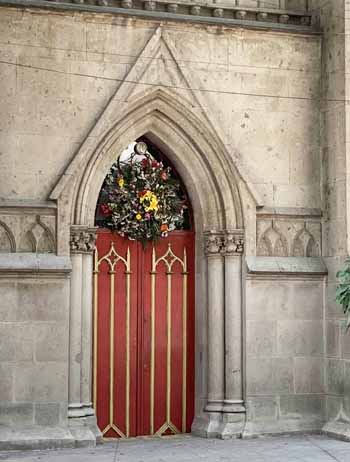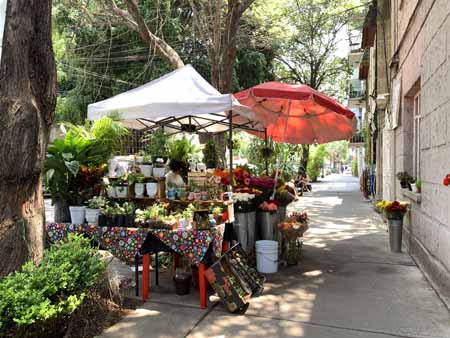
A Dog’s World
Roma Norte is a special place, especially if you’re a dog. Here, the dogs certainly have it all. Before arriving I’d heard that Roma Norte was a dog-lovers paradise, and I can confirm that it’s true. Everywhere you look there’s a dog on a leash with a happy owner tagging along.
And I guess one dog is not enough for most folks here, since the majority of dogs seem to come in multiples of 2, 3, 4, or even 5. Seriously, everywhere you look there are dogs, dogs, dogs of every size, shape, and color.
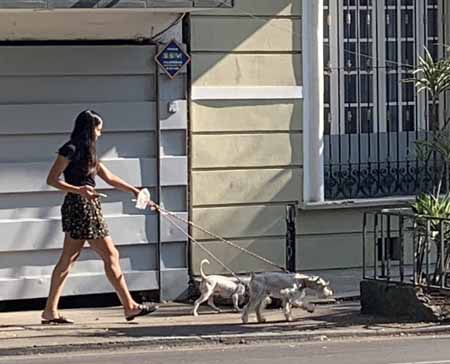
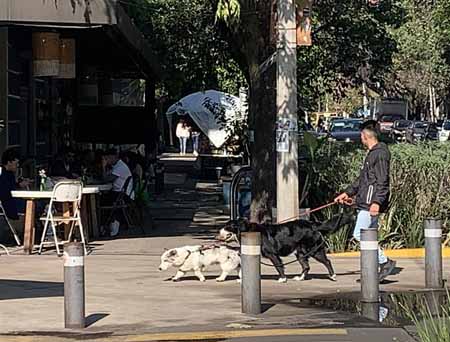
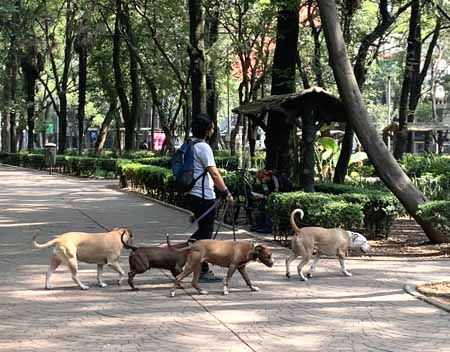


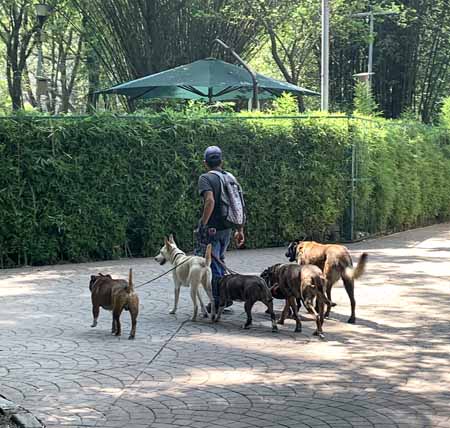
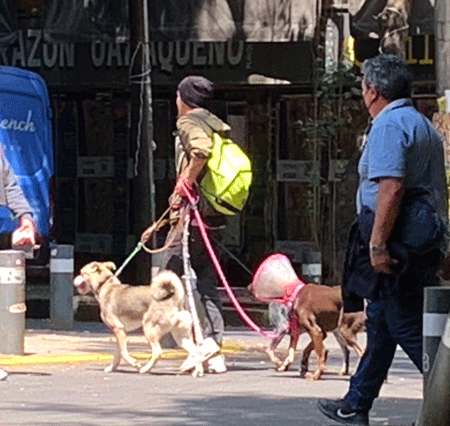
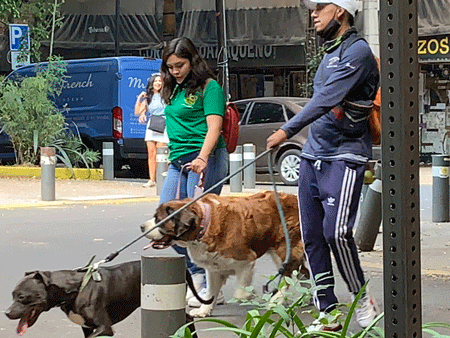
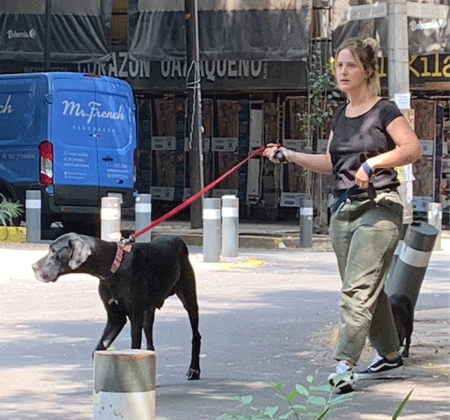


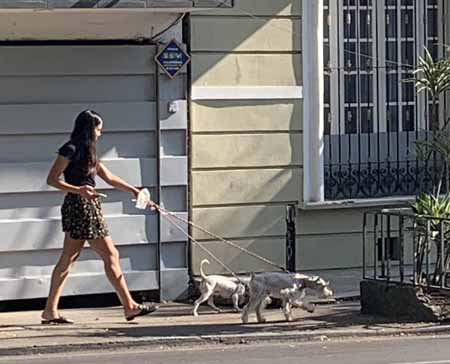
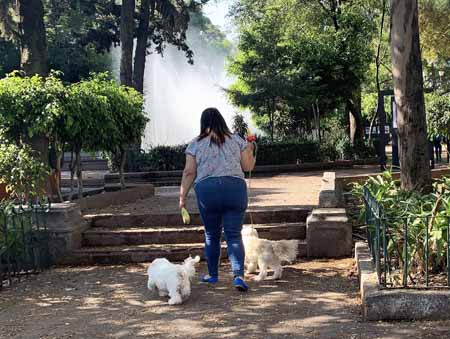
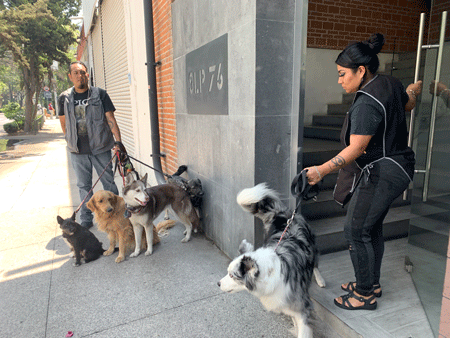
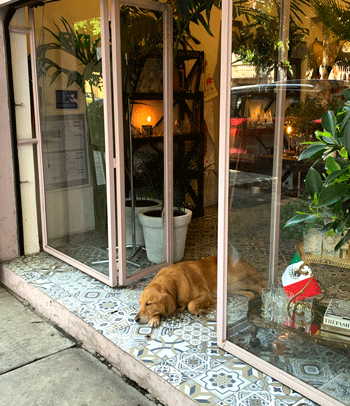
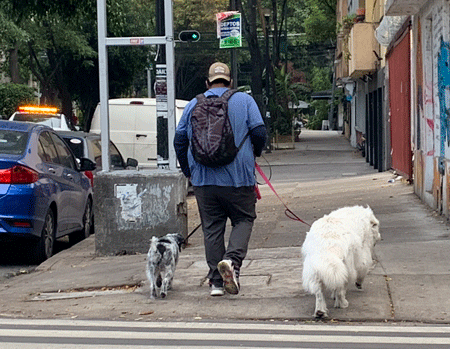
And, when you have such a dog-centric neighborhood, many restaurants put out a water bowl, and sometimes you need “no-pee” signs too.
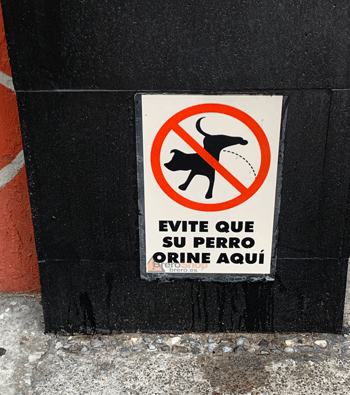
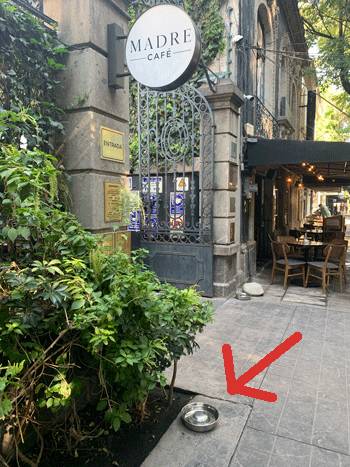
Mexico City
Speaking of multiples, Mexico City is an enormous city of 21 million people, made up of a whopping 350 neighborhoods. Roma is just one of those many neighborhoods.
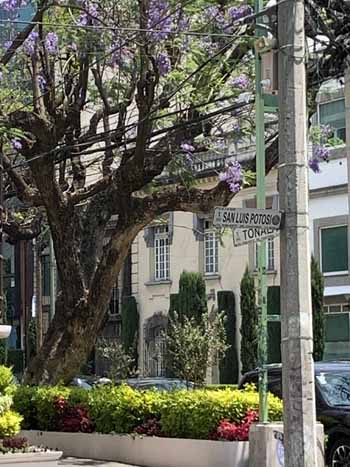
We’d already spent nearly a week in the Centro Historico neighborhood of Mexico City, and are so pleased to now be spending nearly a week in Roma Norte (the north end of Roma) in Mexico City.
Roaming Roma (and Condesa)
Our first day in our new neighborhood we walked to beautiful local plazas and parks. We meandered from plaza to park, in and out of the neighboring La Condesa neighborhood, that abuts Roma Norte.
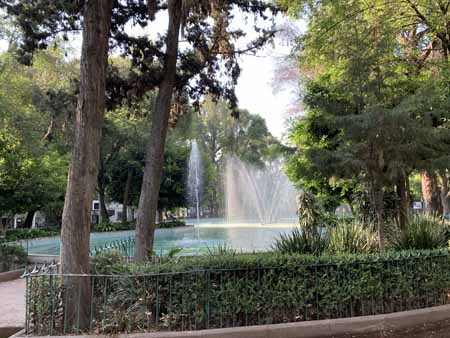
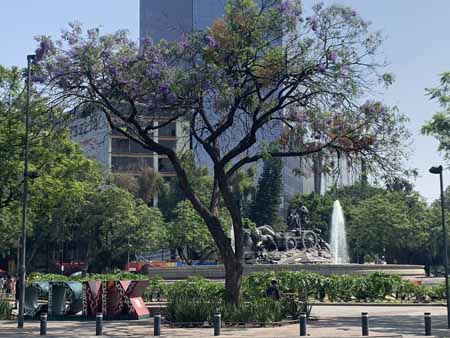
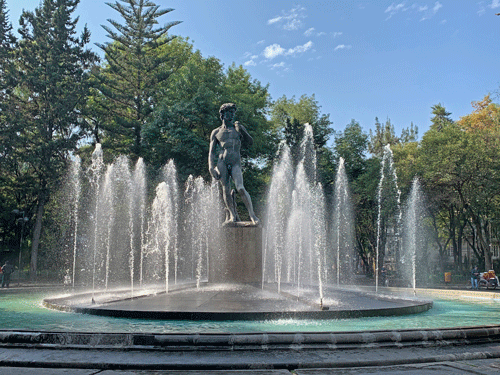
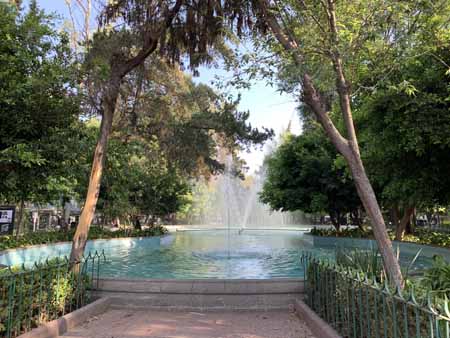
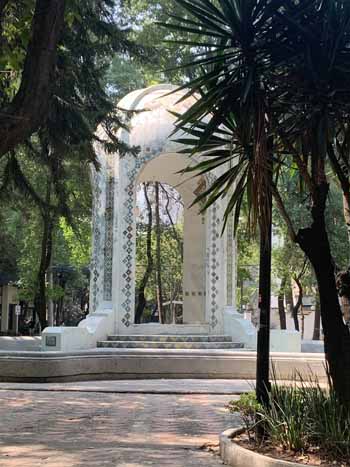
Parque Mexico
Our ultimate destination one bright & sunny morning was Parque Mexico in the Cuauhtémoc neighborhood, about a 20 minute walk from our Roma Norte apartment.
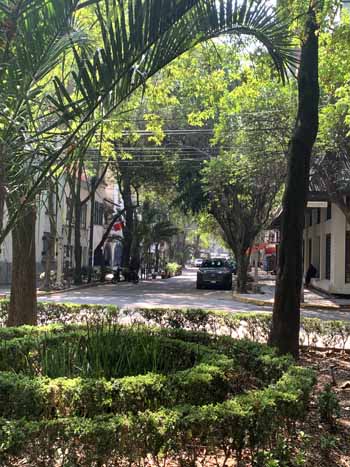

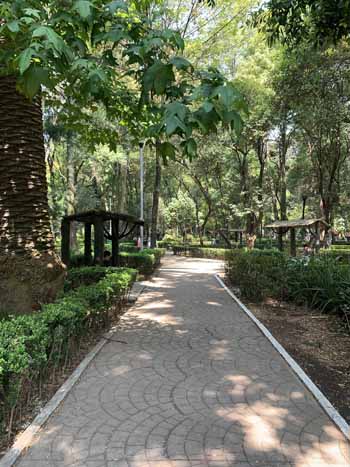
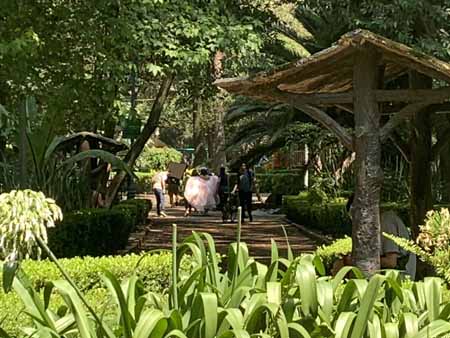
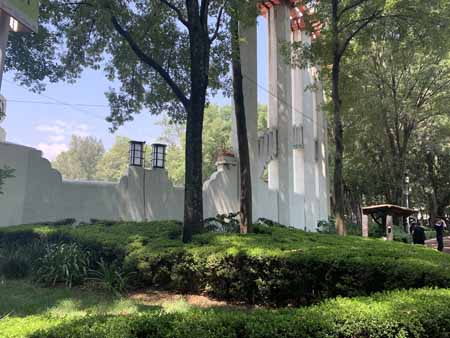
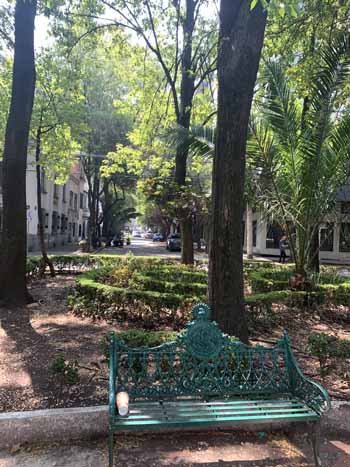
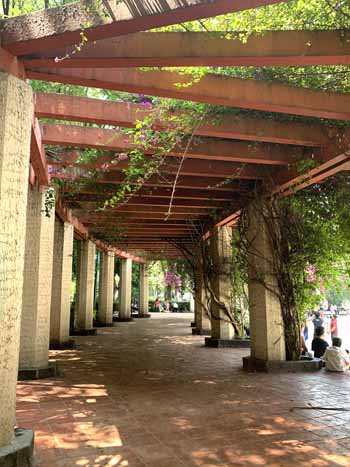
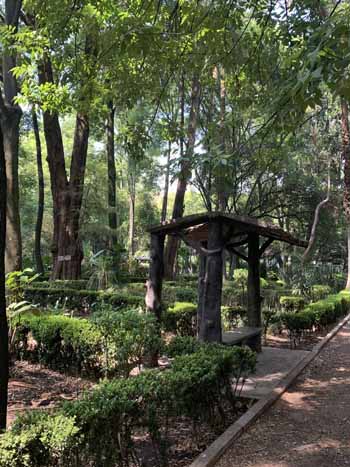
The park covers a sprawling 22 acres. It’s a leafy, urban park known for its art deco architecture, a walking path, playground & fenced dog park.
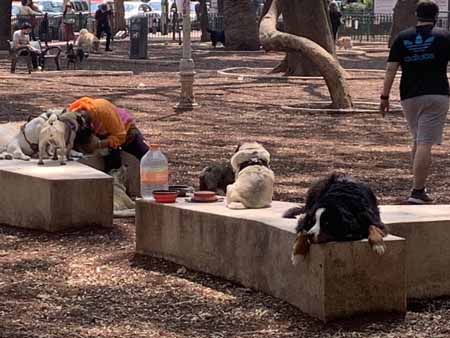
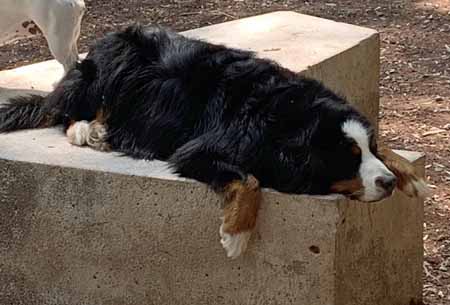
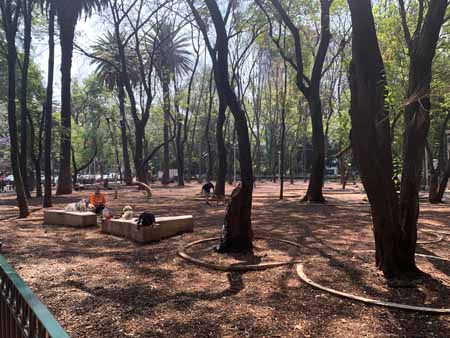
We arrived on a Saturday morning and the park was packed with families enjoying time together. There’s a huge patio area surrounded by bright pink bougainvillea that is actively used by joggers, people practicing boxing, weight lifters, and tons of skateboarders of all ages. Not a bad setting to get a workout. Not bad at all.
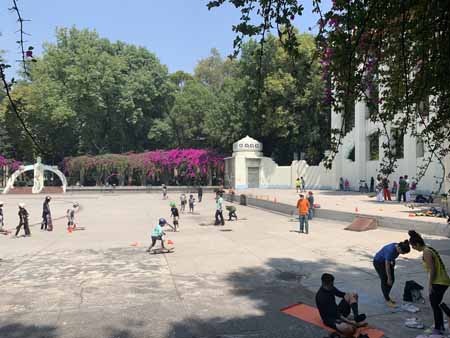

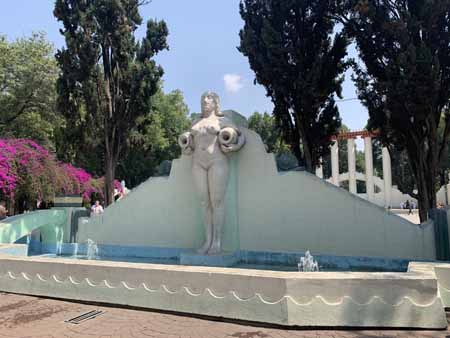

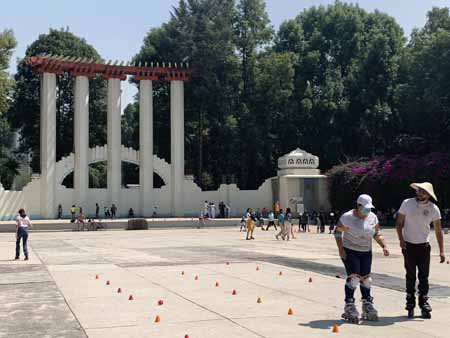
The Cafe Culture
Roma Norte is an upscale, suburban, colonial neighborhood. It’s also foodie heaven. So many coffee shops, fresh bread & pastry cafes, and restaurants of every persuasion with local and international options.
Most establishments have lovely sidewalk café tables, and many have extra outdoor seating decks built due to Covid too. There’s at least two or three charming places to eat or drink on every block in the Roma.
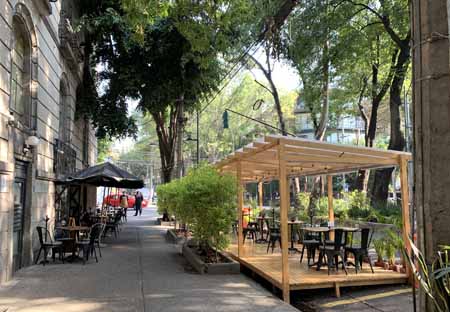
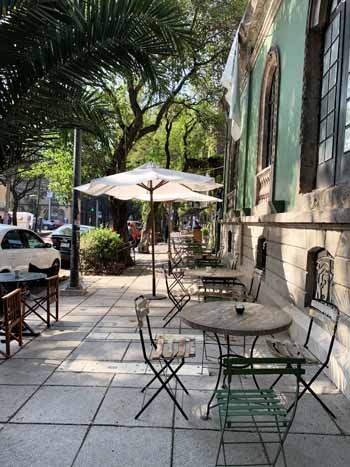
Large, stately trees line every wide and spacious street, providing shade and a sense of permanence and stature.
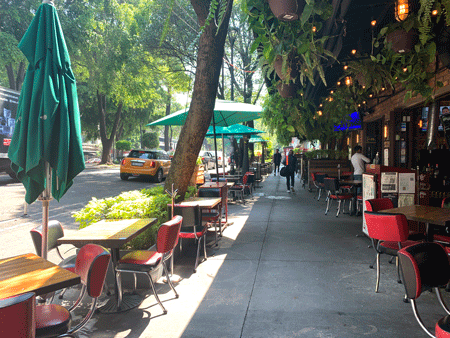
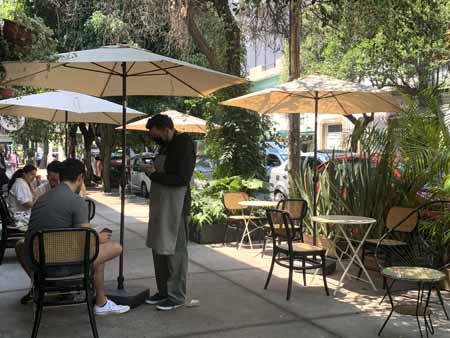
And every few blocks is a captivating plaza, with a splendid statue or trickling fountain as its centerpiece.

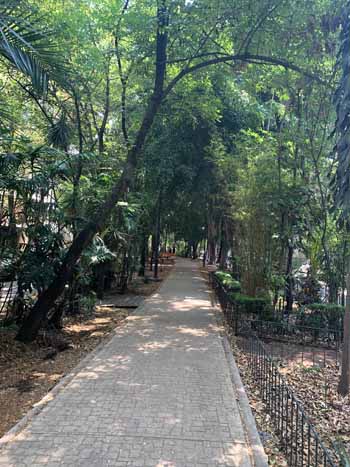
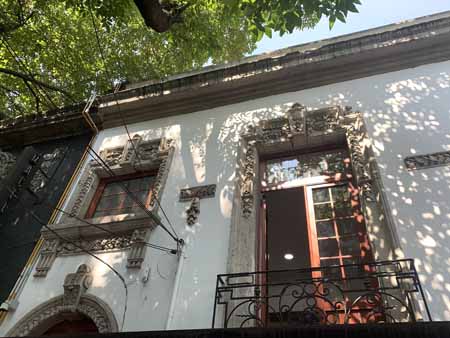
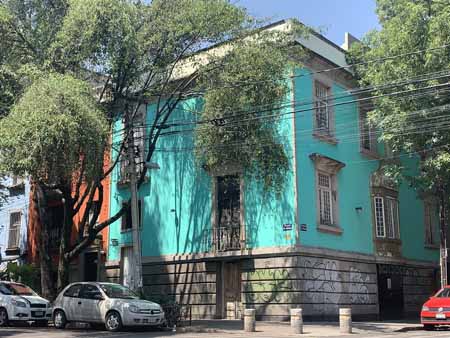
Roma is very hip and trendy. It’s not hard to find gluten free and vegan options, in fact two exceptional vegan restaurants are within a 2-4 minute walk from our apartment.

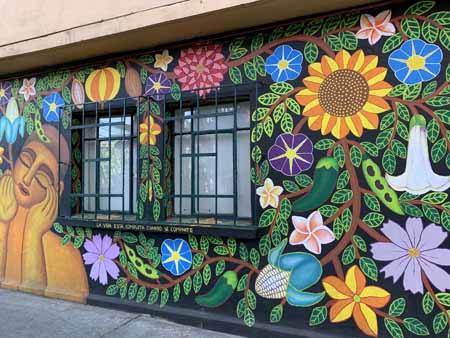
There’s plenty of colorful street murals, corner flower stands, and bicyclers tooling along on the uncrowded streets.


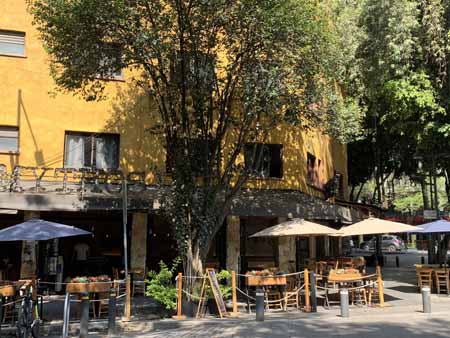
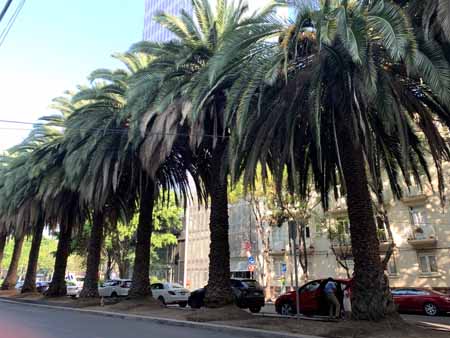
Museo Nacional de Historia Castillo de Chapultepec
We decided to expand our wandering circle a bit wider, and ended up high on a hill exploring the Museo Nacional de Historia Castillo de Chapultepec (or the Chapultepec Castle), about a 20 minute Uber ride from Roma Norte.
Such an impressive palace. The grounds were immaculate, coifed just so. The grandeur was breathtaking.
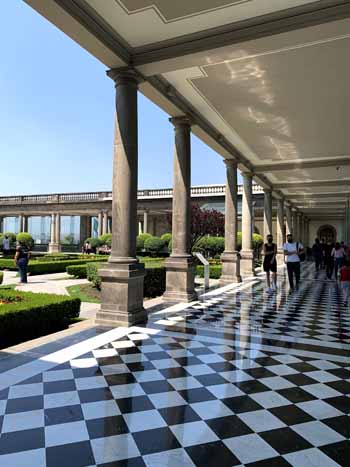
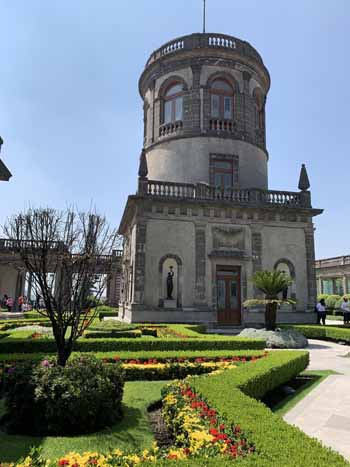

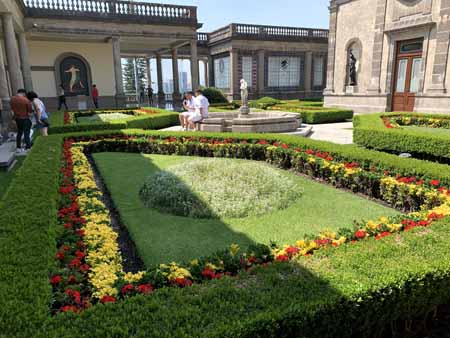
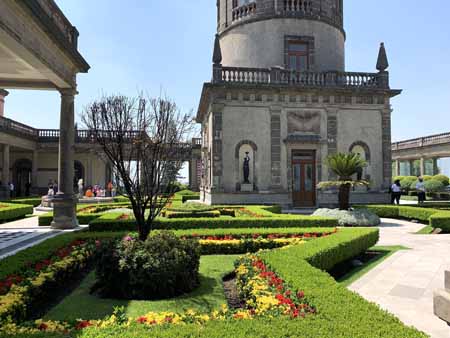
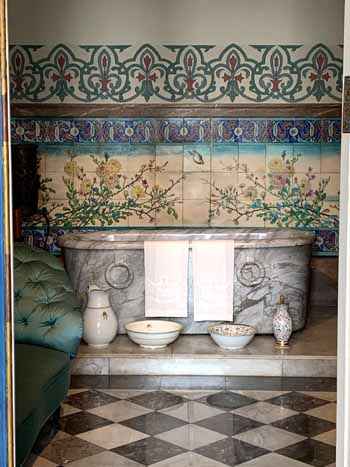



The deep green foliage, red & yellow flowers, and perfectly shaped round ficus trees painted a stunning picture.
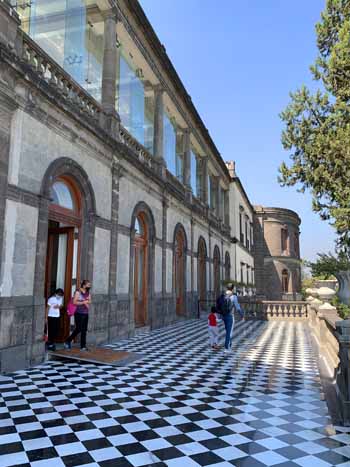
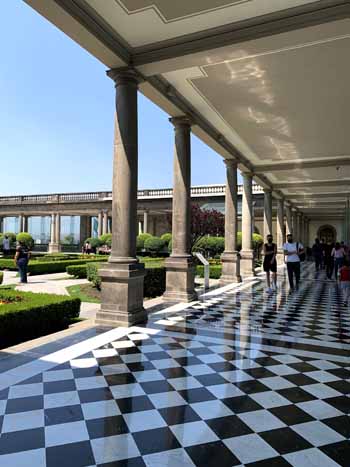
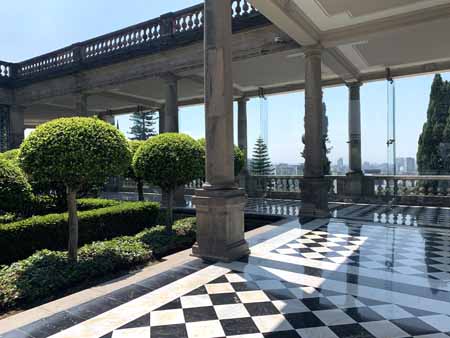
The expansive patios paved with black and white checkered marble was a lovely contrast to the palace exterior.

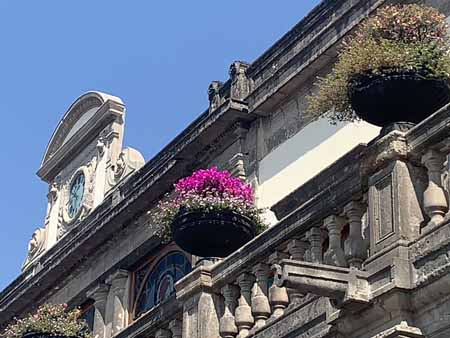
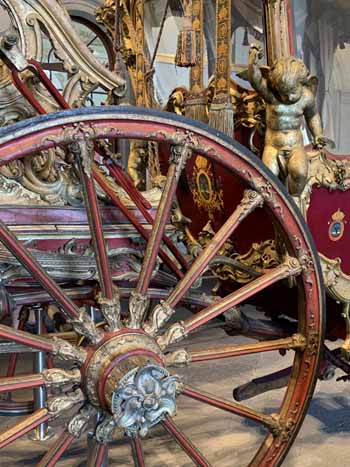
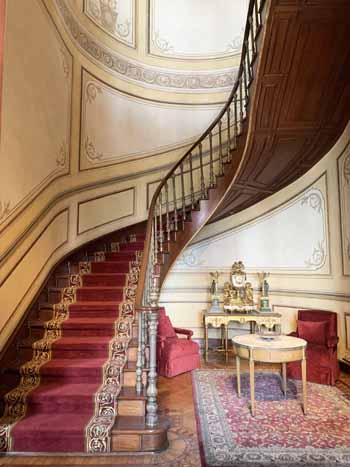
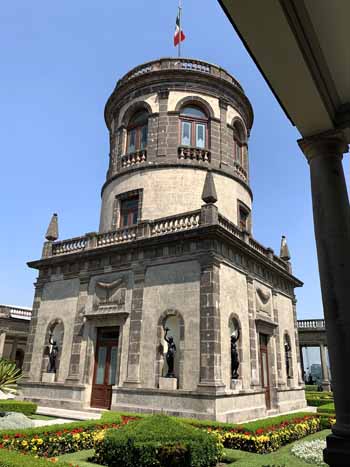
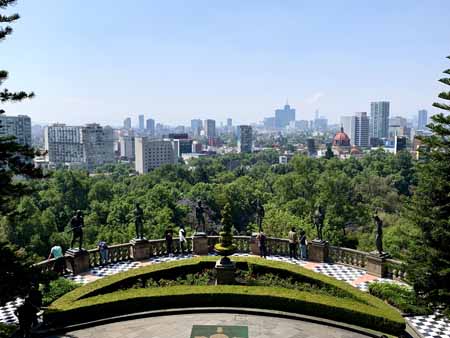
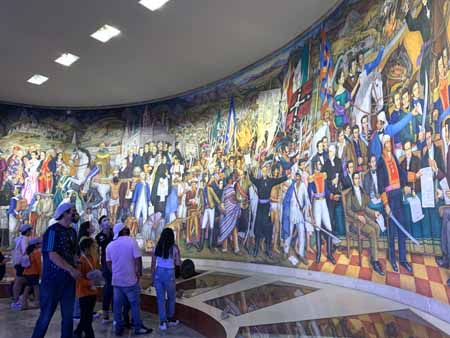
The views down to Mexico City below at this beautiful palace perched atop a hill were unforgettable.
The Holy City of Teotihuacan
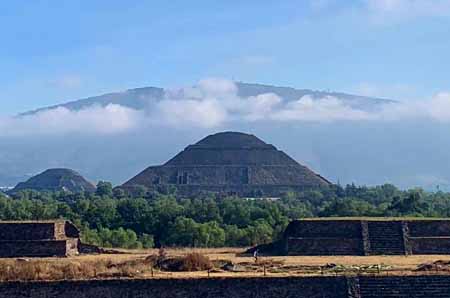
One early morning we took a tour to the Pyramids of Teotihuacan with our tour guide Francisco, starting out at 7 am from our Roma apartment. Teotihuacan is about 45 minutes northeast of Mexico City.
A Bit of History
Teotihuacan was built between the 1st and 7th centuries A.D, and, believe me, the wow factor is definitely still in full force. Scholars estimate that the Teotihuacan civilization lasted about 750 years, from 150 AD until 900 AD.
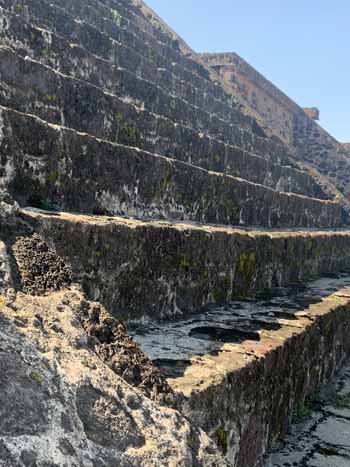
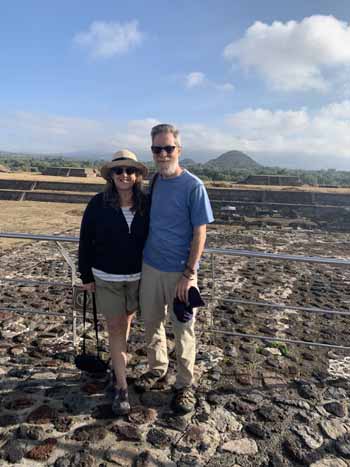
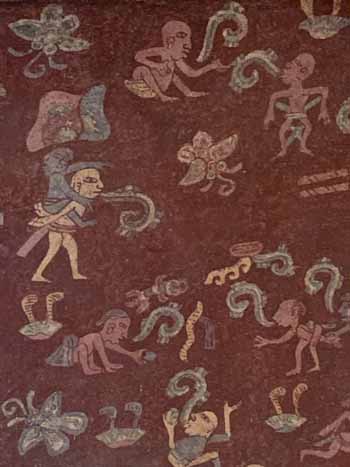
The Mystery Builders
It’s still unknown who built this incredible and once thriving city that may have held as many as 200,000 people at its peak. Francisco explained that if they could recover items from a tomb it would give scientists great information as to the people that lived here.
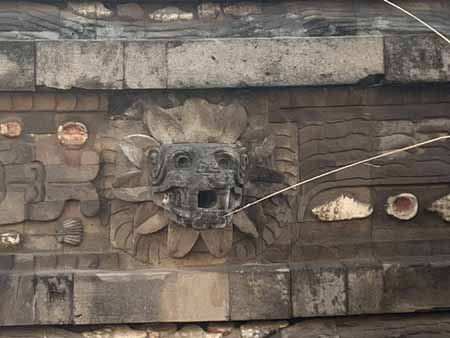
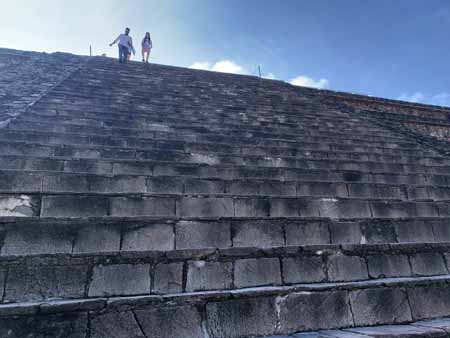

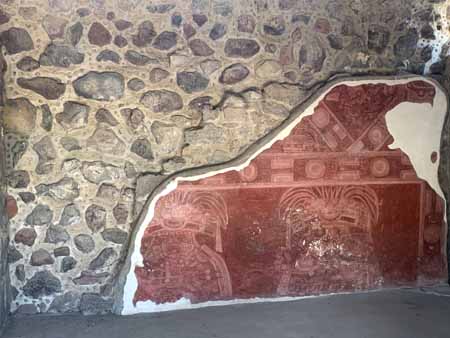
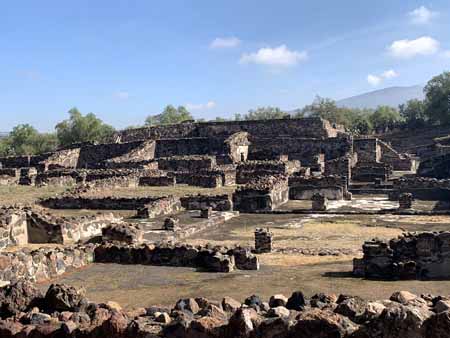
LiDAR, Measure & Map
Current day archeologists use a high-tech method called LiDAR that allow them to measure and map objects and structures that remain hidden underground. LiDAR directs hundreds of thousands of pulses of light toward the ground (from space). Very cool.
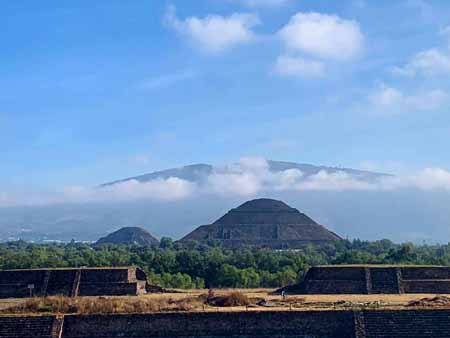
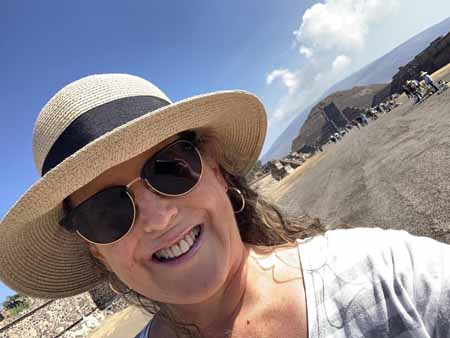
This breakthrough technology has allowed archeologists to identify the city layout and find any tunnels and tombs deep inside the Pyramids.
Raiders of the Found Ark
Scientists located a tomb in the first Pyramid we climbed, but unfortunately it had been raided, so all the goodies were gone. Just like Indiana Jones….but real life.
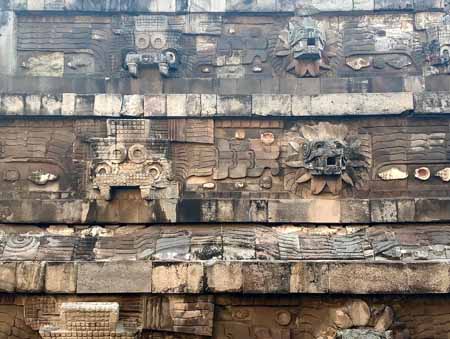

A Long Way to Go
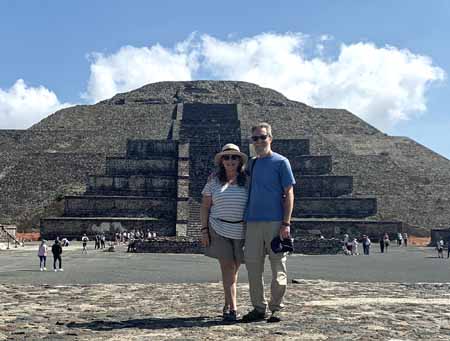
Current day excavation didn’t start until 1905, just over one hundred years ago. The city is currently only 10% recovered, but Archeologists continue to work to uncover more of the city and continue to learn more about this ancient civilization.
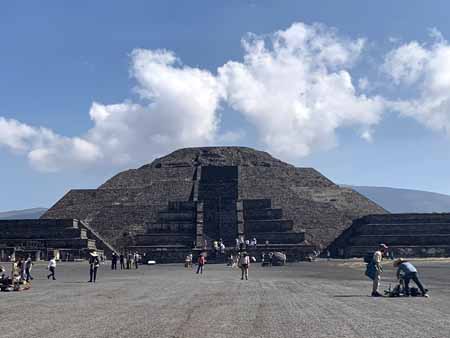
Francisco pointed to gently sloping mounds of ground just outside the site area we walked. All those mounds, small and large, that frankly looked like normal fluctuations in the terrain to my untrained eye, are more city to be uncovered and explored. The civilization covered eight square miles and was the largest city anywhere in the Western Hemisphere before the fourteenth century.
Naming Rights


The Aztecs found the city in the 1400s and named it Teotihuacan, meaning the place where the gods were created. Then they named the Pyramids, Pyramid of the Sun and Pyramid of the Moon. Sure sounds like they were as impressed as I am. Not sure how they could have given higher honors than the gods, the sun, and the moon.
Third Largest is still Bragging Rights
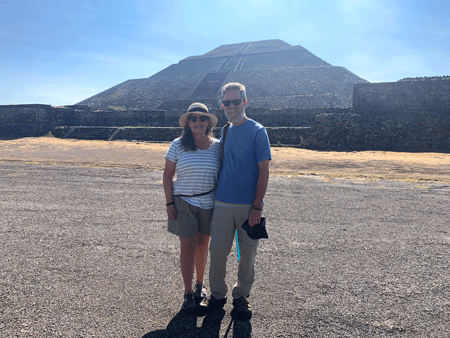
The Pyramid of the Sun is the largest structure in the ancient city of Teotihuacan, Mexico, and one of the largest buildings of its kind on the Western Hemisphere. It’s 738 feet across and 246 feet high, making it the third largest Pyramid in the world. Pictures just don’t do it justice. It’s pretty darn mammoth.
Praise the Gods
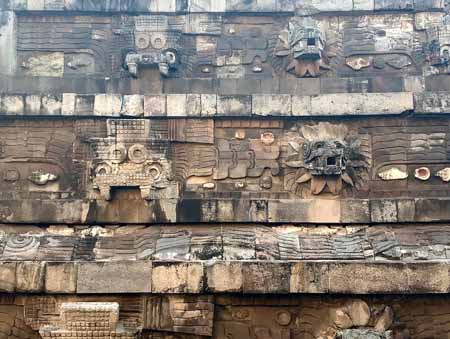
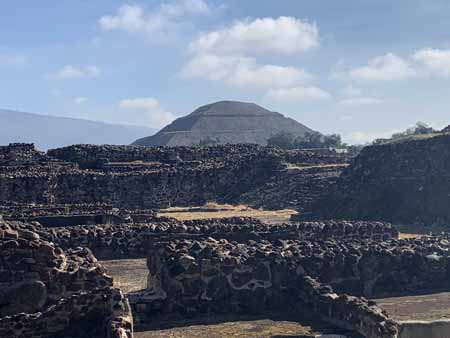
At the point that the Aztecs came along, the city had been abandoned for centuries. There’s still a lot of speculation surrounding the actual use of the Pyramids and their functions, but archeologists have found a lot of evidence of human and animal sacrifice, even child sacrifice. I guess it was priority number one to keep the gods happy, and you gotta do, what you gotta do (ugh).
What a Place
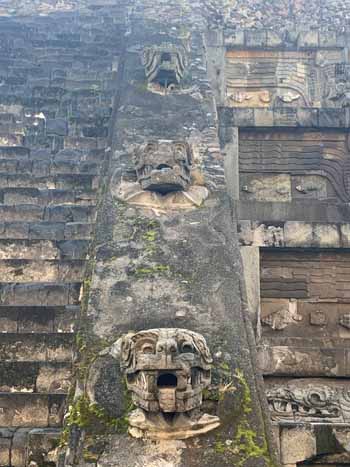
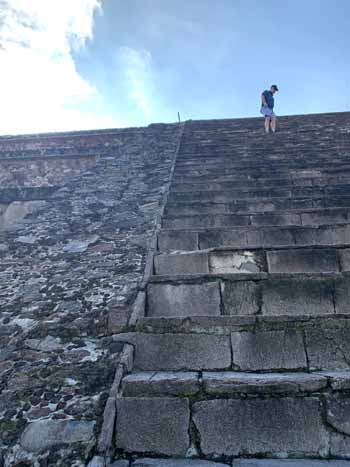
Apart from the pyramids, Teotihuacan is also anthropologically significant for its complex, multi-family residential compounds, its vibrant, well-preserved murals, its significant trade with other cities, and its diversity. There’s evidence that people from all over Mexico came to live in Teotihuacan over it’s estimated 750 year tenure.
All Are Welcome
Some speculate that a huge wave of immigrants came to the city because of a large volcanic eruption near Puebla. The dates of the known eruption and the growth of Teotihuacan coincide.
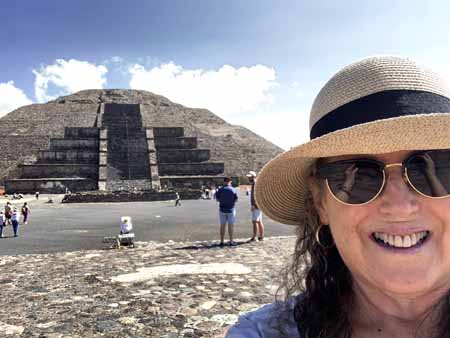
Hmmm…speaking of Puebla’s volcano…that sounds pretty serious. I guess that El Popo means business (see Puebla post).
WINS
We walked over 100 miles this month alone (to April 25th). That’s over 239,110 steps!
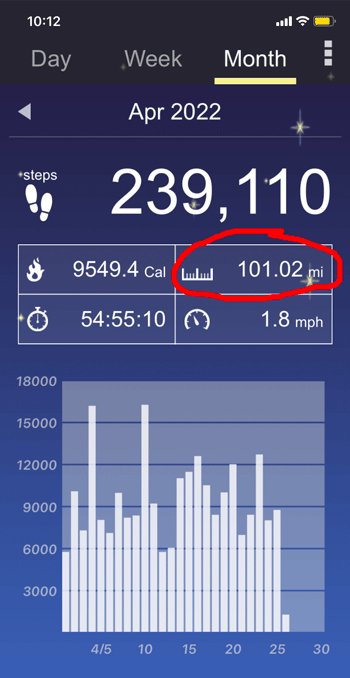
We are both NEGATIVE!! (on our Covid Antigen test taken this morning at the private medical facility about 5 minutes away). So we can fly to the USA!
Spending almost 6 weeks in Mexico, exploring, learning, and enjoying this beautiful country!
LOSSES
The only loss I can think of is that this is our last location on this trip! So sad!

